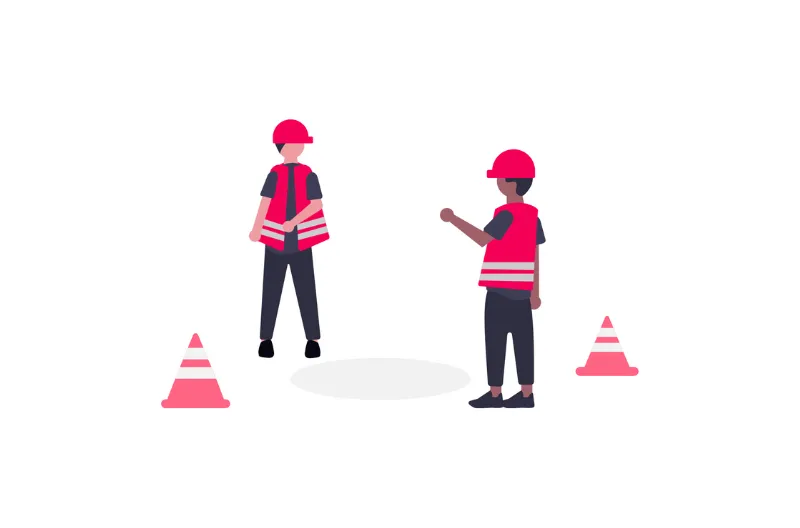DPP under construction: how to prepare for and get ahead of 2026

Starting in 2026, many products used in construction must have a Digital Product Passport (DPP).
El Regulation (EU) 2024/3110 places construction among the first sectors required to provide complete, reliable and durable data on each product.
If you manufacture, import, distribute or specify materials for construction, This change touches you fully.
In this article, we explain to you what the DPP is, how it will be applied in the construction sector and why have a PIM tool will be key to adapt.
An industry under pressure
The construction sector consumes a large amount of resources and generates about 35% of solid waste in the European Union.
In addition, many materials still lack clear traceability as to their origin, toxicity or recyclability.
The DPP seeks to solve some of these problems by providing:
- Reliable and accessible data for all agents in the sector.
- Greater transparency in the technical and environmental properties of materials.
- Easy regulatory compliance, especially with regard to sustainability and the circular economy.

What is the DPP
El Digital Product Passport is a structured set of digitally accessible data that accompanies a physical product throughout its life cycle. It includes key information about:
- Composition of the product.
- Technical and environmental performance.
- Mandatory certifications and declarations (such as CE or EPD marking).
- Intended use, maintenance and recycling instructions
- Environmental impact and carbon footprint.
- Information on traceability and origin of materials.
The DPP can be viewed using a digital identifier (such as a QR code) and will follow the product from its manufacture to its reuse, recycling or disposal.
In addition, the regulations state that this information must be kept accessible during 25 years in the European registry, which poses new challenges in long-term document management.
What products will be included
The final list will arrive in phases, but the regulations already aim at:
- Basic materials: cement, steel, glass, wood, plaster.
- Prefabricated: doors, windows, panels, facades, floors.
- Technical installations: HVAC, wiring, lighting.
- Finishes: paints, coatings, insulators.
The approach will be gradual, with the first regulatory requirements starting in 2026.
.webp)
What information should a DPP under construction contain
Although definitive technical standards are still under development, DPPs are expected to include at least:
- Product data sheet.
- Information on environmental impact (such as carbon footprint or recycled content).
- Certifications (CE, EPD, DoP...).
- Safety statements and hazardous substances.
- Instructions for use, maintenance and disassembly.
- Data on the possibility of reuse or recycling.
Organize your data with a PIM
The volume and complexity of the data needed for a DPP make it not feasible to manage them manually or in scattered spreadsheets.
This is where a system of Product Information Management System (PIM) becomes essential.
A PIM allows you to centralize, structure and keep all product information up to date, providing:
- Unification of data: Integrates technical, commercial, regulatory and environmental information in a single environment.
- Standardization: It structures the data according to the requirements of the DPP and allows it to be exported in the appropriate formats.
- Version Control and Validation: Ensures that published data is reliable and consistent.
- Agility in the face of regulatory changes: Allows you to adapt attributes and documentation without redoing manual processes.
- Integration with other platforms: Such as BIM, digital catalogs or document management systems.
How to prepare
The best way to prepare for the DPP is to have your data in order. Some key actions:
- Audit current information and identify duplicates, empty fields, and inconsistent formats.
- Digitize technical documentation and certifications in a structured way, not just as attachments.
- Define a clear and complete attribute structure that contemplates the requirements of the future DPP.
- Adopt a PIM system If you don't have one or adapt the existing one to ensure that it can meet these needs.
- Train the team so you know how to maintain and enrich product data in a continuous and organized way.
.webp)
Beyond the regulations
The DPP does not only respond to a legal requirement. It also represents a key tool for moving towards a circular economy in construction.
Having detailed, structured and traceable information allows:
- Reuse materials in new projects.
- Plan selective demolitions and quality recycling
- Reduce dependence on new raw materials
- Quantify the value of products beyond their initial use
In this context, the PIM ceases to be just a management tool to become a facilitator of new, more sustainable and efficient production models.
It's all in the data
To comply with regulations, ensure traceability and work efficiently, companies need information structured, complete and always up to date.
The DPP will change the way construction manages product information. The sooner the data is classified and structured, the easier it will be to adapt.
A PIM system eases that order, reduces risks and frees up time for higher-value tasks.
We're here to help
Our team of PIM specialists can accompany you every step of the way.
Contact us and let's talk about how we can help your company.
Cómo podemos ayudarte
Consulta los servicios con los que te ayudaremos a conseguir tus objetivos digitales.
